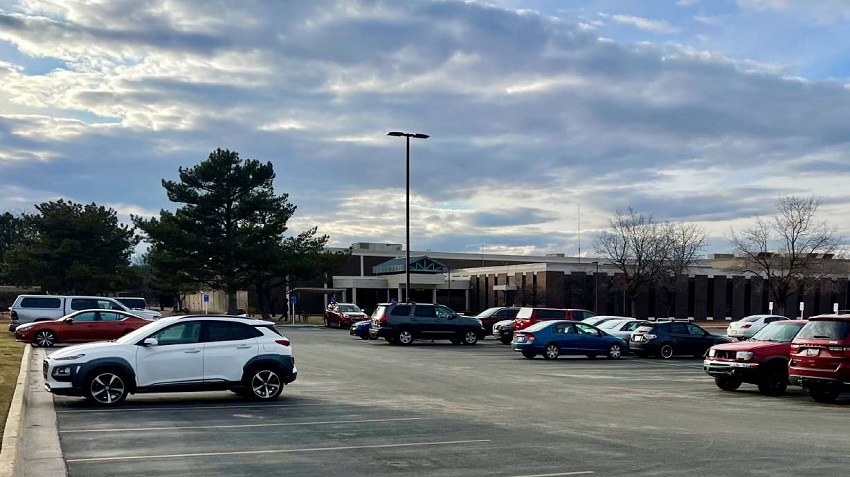OGDEN, Utah — A return-to-office mandate issued by the U.S. Treasury Department has led to significant overcrowding at the IRS facilities in Ogden, Utah, though the situation appears to be easing somewhat. The mandate, which required all IRS employees to return to the office by March 10, has caused considerable strain on the space at the Ogden-area IRS offices, as many workers were previously telecommuting.
Robert Lawrence, president of the Ogden-area chapter of the National Treasury Employees Union (NTEU), Local 67, explained that the situation was chaotic when employees first returned. Many workers, including those at the IRS Service Center at 1160 W. 12th St. — a key facility with nearly 500,000 square feet of office space — were forced to work in hallways, conference rooms, and even other non-traditional spaces due to the lack of available desks. “We have people teleworking in hallways at the IRS in conference rooms. We have them everywhere,” Lawrence said. “A lot of these people can’t go to the same desk every day. It’s quite the mess.”
The overcrowding issue has been alleviated to some extent, as the Treasury Department has started to soften its stance on teleworking. Lawrence noted that while things were slowly improving, the transition to pre-pandemic telework policies is not yet fully realized. He emphasized that workers who were previously allowed to telework should be permitted to return to that arrangement.
Many of the IRS employees in Ogden are in a unique position, as the area became home to a significant number of IRS jobs following a consolidation of agency functions years ago. Instead of expanding office space to accommodate the growing workforce, many employees were allowed to telework, which Lawrence says had worked well for both the employees and the agency. “They’ve been doing a great job,” he said.
The overcrowding issue comes after a directive issued by President Donald Trump on January 20, calling for all federal workers to return to the office “as soon as practicable.” In response, the Department of the Treasury issued a memo on February 28, requiring all IRS employees to be physically present at their respective offices by March 10. However, the mandate did not take into account the challenges specific to the Ogden facility, where space is already at a premium.
Lawrence expressed frustration with the decisions being made at the federal level, particularly by the Department of Government Efficiency (DOGE), a non-governmental body created by Trump and led by entrepreneur Elon Musk. According to Lawrence, DOGE is responsible for reducing inefficiencies in government, but has not been responsive to the specific needs of IRS employees in Ogden. “The IRS would never have let this happen, but Treasury, per DOGE, is making these calls, and Treasury doesn’t know what’s going on out here in Ogden,” he said. “They think there’s space for everybody, and there’s not.”
Adding to the uncertainty, the General Services Administration (GSA) initially included the Ogden IRS Service Center on a list of 440 federal buildings marked for potential sale or disposal. However, after public backlash and further review, the GSA reduced the list to just eight buildings, with the Ogden facility removed from the list. Lawrence saw this as a positive development, noting, “We’re going to chalk that up to some good news.”
The confusion surrounding office space and staffing is compounded by concerns over potential layoffs. In late February, the IRS let go of 100 probationary employees as part of broader federal workforce reductions under the Trump administration. Up to 1,000 employees in the Ogden area were also at risk of being laid off by mid-May. While some probationary workers are being reinstated, Lawrence remains uncertain about the future of the remaining employees. “The main layoff was to happen May 15; that was where we would lose thousands of people. I don’t know if that’s been put on hold,” he said.
Despite the challenges, some positive developments have emerged. The GSA’s decision to remove the Ogden IRS facility from the list of buildings to be disposed of, coupled with the easing of the return-to-office mandate, provides some relief to the workers in Ogden. However, the situation remains fluid, with many employees uncertain about their long-term work arrangements and the stability of their jobs.
For now, Ogden’s IRS workers continue to navigate a challenging landscape, caught between shifting policies, overcrowded offices, and the ongoing uncertainty surrounding federal staffing decisions.

